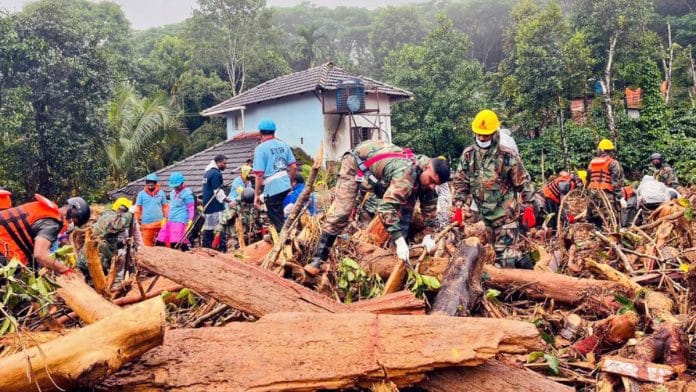New Delhi: The Kerala government issued a gag order Thursday, barring scientists from visiting the landslide-affected areas and sharing opinions or study findings with the media, only for the Chief Minister’s Office (CMO) to then direct that it be withdrawn.
Barely hours after the order was issued, Kerala Chief Minister Pinarayi Vijayan’s office directed the chief secretary to intervene and get the order withdrawn. But the same was yet to be officially withdrawn till late Thursday.
“News of the disaster management authority barring scientists and research institutes from visiting and giving opinions on the disaster-hit Wayanad’s Meppadi panchayat, is a misunderstanding. The state government does not endorse such a policy. Any communication giving such an impression is incorrect,” a statement by the CMO read.
It added, “Chief Minister Pinarayi Vijayan has directed the chief secretary to intervene and withdraw the notification.”
The earlier order issued by the state’s commissioner and principal secretary, disaster management, Tinku Biswal, had said that, in exceptional cases, where scientists needed to conduct studies at the site, prior permissions will have to be obtained from the Kerala Disaster Management Authority (KDMA).
“You are requested to direct all science and technology institutions in the state of Kerala not to undertake any field visits to Meppadi Panchayath, Wayanad, which is notified as a disaster-affected area,” said the letter by the principal secretary to the department of science and technology (DST).
It added, “The scientific community shall be directed to restrain themselves from sharing their opinions and study reports to the media.”
Landslides, triggered by heavy rainfall, in Kerala’s Wayanad district have claimed at least 295 lives, local media reports said, in what could be the worst natural calamity in the state since the 2018-19 floods when more than 400 were killed.
On Thursday, the Indian Space Research Organisation’s National Remote Sensing Centre released high-resolution satellite images showing the extent of damage caused by the landslides. Images of Chooralmala, among the worst hit, before and after the disaster showed that about 86,000 square metres of land had slipped out of place.
This is not the first time scientists have been barred from highlighting research findings in disaster-hit regions. The National Disaster Management Authority (NDMA) issued similar directives to scientists and researchers in the aftermath of the Joshimath landslide which hit the densely populated town in Uttarakhand between December 2022 and January 2023, saying that their “interpretation of the situation was causing confusion not only among affected residents but also among citizens of the country”.
At the time, a preliminary report released by ISRO, showing rapid subsistence—movement of the ground—in parts of Joshimath was also abruptly removed from the space agency’s website.
Senior officials from the DST clarified that the order issued by the state government was in line with the NDMA’s protocols and was meant to prevent panic among the public and to avoid the spread of any misinformation.
“This is a temporary order issued to ensure no hurdle in the rescue operations. We cannot stop scientists from conducting their research. We encourage it. But we need to be sensitive to the situation at the moment,” an official from DST said.
Environmental experts also said this order was probably issued to control panic among locals. However, they said that the government also needs to respect the need for timely research which could present a clearer picture of the disaster and help states be better prepared to handle future calamities.
“Scientists from government institutes will be conducting their studies and tabling their confidential findings before the government. This order is for the autonomous institutes that have the liberty of publishing their research findings. Studies have been conducted in Wayanad in the past, noting its ecology and vulnerability, and study will continue in the future as well,” said geologist YP Sundriyal from the HNB Garhwal University.
He, however, added that scientific research is an integral part of disaster management and the government needs to take the findings and warnings of scientists seriously if they want to effectively manage climate-related disasters in the future.
This is an updated version of the report
(Edited by Sanya Mathur)
Also read: Explained with maps: How topography, human density led to devastation in Kerala’s Wayanad






